SEARCH






|
|
|
|


by Editor Miro Susta
Published the 13th of January 2021
The Alps are beautiful mountains, there is something for everyone, whether for climbing, hiking, enjoying natural landscapes or just simply taking photographs.
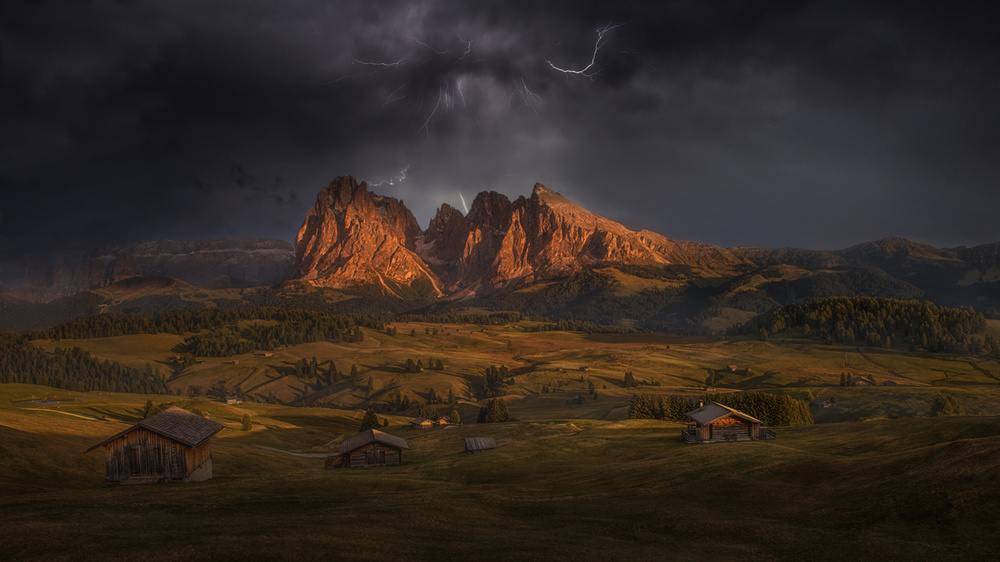
'Lightnings' by Peter Svoboda, MQEP
This article shares photographs from some beautiful alpine landscapes featured in the 1 x gallery. It is also an invitation to explore the Alps and appreciate their beauty.
The Alps (Celtic "alb" = high, "alpa" = mountains) are the highest and most extensive mountain range system that lies entirely in Europe, covering an area around 200’000 km2.
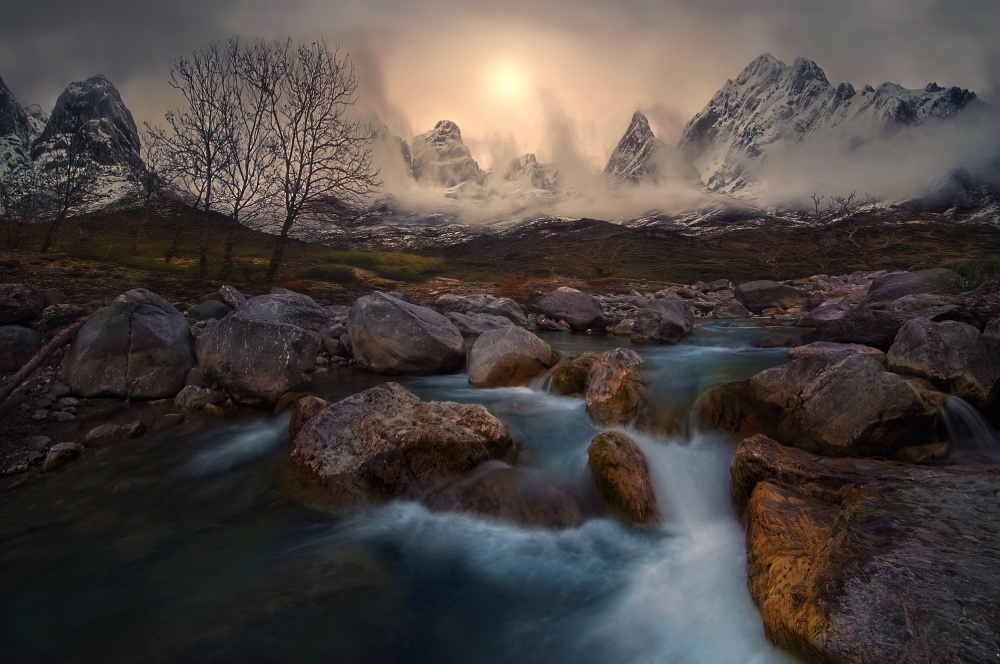
'Change of seasons' by ChrisKaddas
The total Alpine mountain range stretches approximately 1’200 km across eight countries: France, Monaco, Italy, Switzerland, Liechtenstein, Austria, Germany, and Slovenia, from Mediterranean Sea to the Carpathian Basin and it is bordered by the Rhone Valley, the Swiss Plateau, the upper reaches of the Danube river, the Little Hungarian Plain, the Po Valley and the Gulf of Genoa.
It forms the habitat of 13 million people and enjoys European significance as an important recreational area.
For many years, the Alpine region formed a significant barrier to travel and communication between northern and southern Europe. To this day, the Alpine valleys and passes are important trans-European transport link.
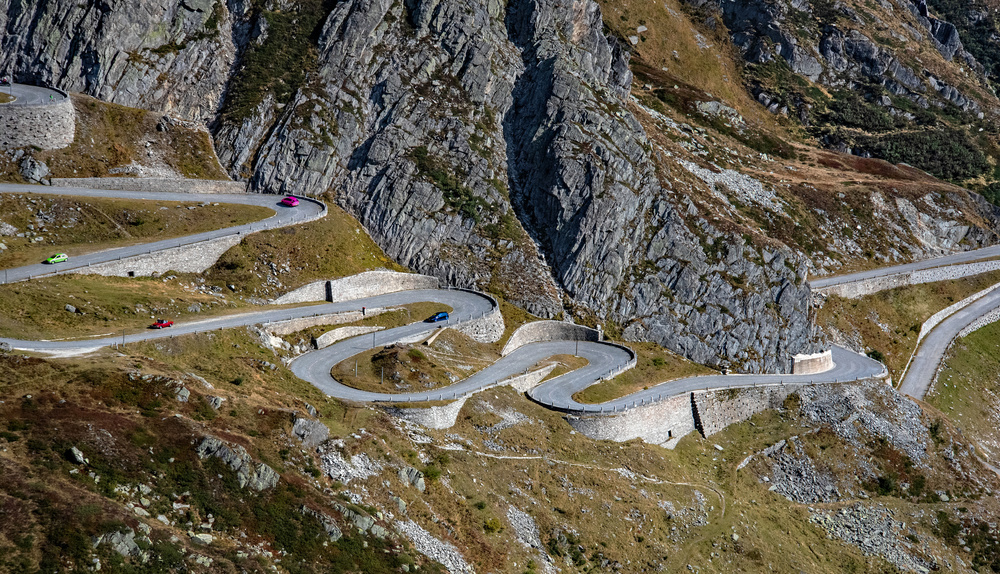
'Tremola San Gottardo' by Miro Susta
The Alpine Range joins the Apennines, encompasses the Po Valley, branches out to the French and Swiss Jura, and ends in a fan shaped pattern in the east in front of the West Pannonian mountains and hills.
In the northeast at the Danube river near Vienna, the Alps are separated from the geologically related Carpathians by the Vienna Basin, and in the southeast they merge into the heavily karstic Dinaric Mountains. In the north, the Alps gradually descend to the Austrian and German Alpine foothills. In the south, the drop is steeper to the Po Valley.
The summit heights in the western mountain ranges are mostly between 3’000 and 4’300 meters above sea level, in the eastern Alps the mountains are somewhat lower.
The highest peak in the Alps is Mont Blanc at 4,810 meters. One hundred and twenty-eight peaks in the Alps are four-thousanders, many of them covered by glaciers.
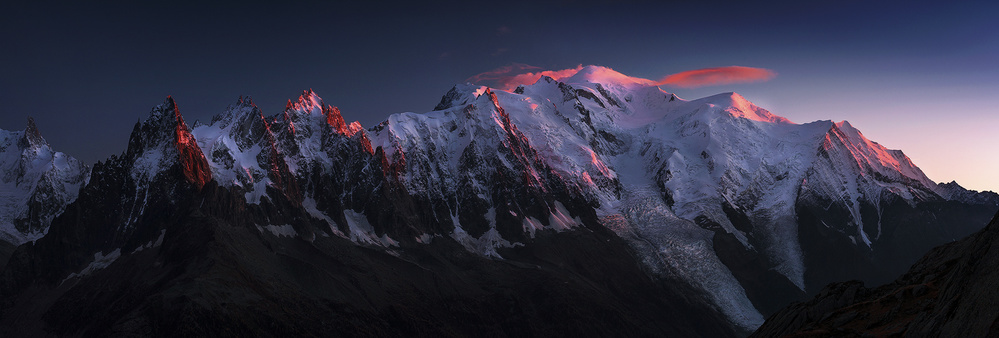
'Peak Of Europe' by Robert Marich
The Alps form an important climate and water divide in the "heart of Europe". They separate the central Mediterranean region with its Etesic (Mediterranean) climate from the Atlantic climate of northern Central Europe and they are under continental influence at the eastern edge as well. The drainage follows these main directions to the Mediterranean, North and Black Sea.
The Alps stand at the crossroads of the French, Italian, German and South Slavic linguistic area. Because of the complex historical background of the Alpine region, the native language of the population does not always correspond to the current international borders.
FRENCH ALPS
French Alps are situated in two distinct regions: Rhône-Alpes and Provence-Alpes-Cote d'Azur in the south-eastern corner of France, bordering Italy and Switzerland.
High icy mountains and huge rock formations, lakes or breath-taking gorges are typical of this part of the well-known European mountain range.
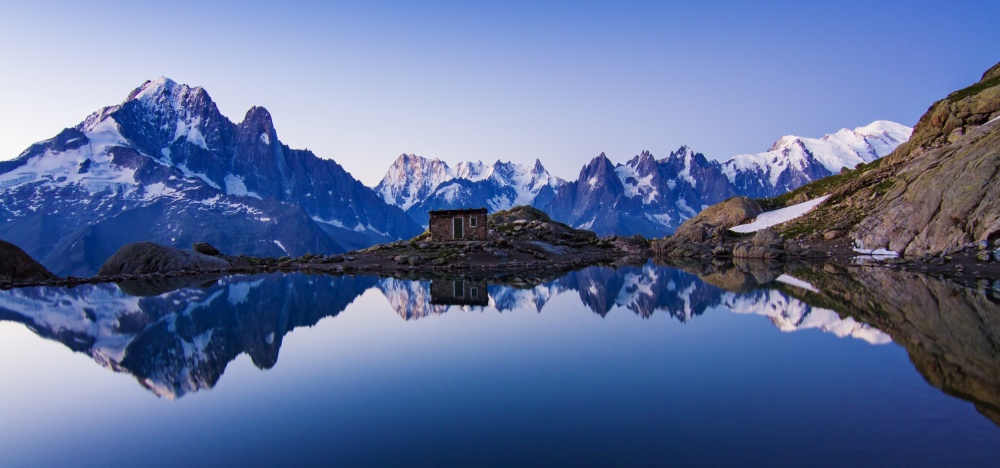
'Lac Blanc Panorama' by Mircea Costina
The French Alps are divided into the Savoy Alps, where the highest massif of the Mont Blanc Alps (4’807 m) is also located, a separate Vanoise massif, the Dauphiné Alps, the Cottian Alps and the Maritime Alps with the Mercantour Massif.
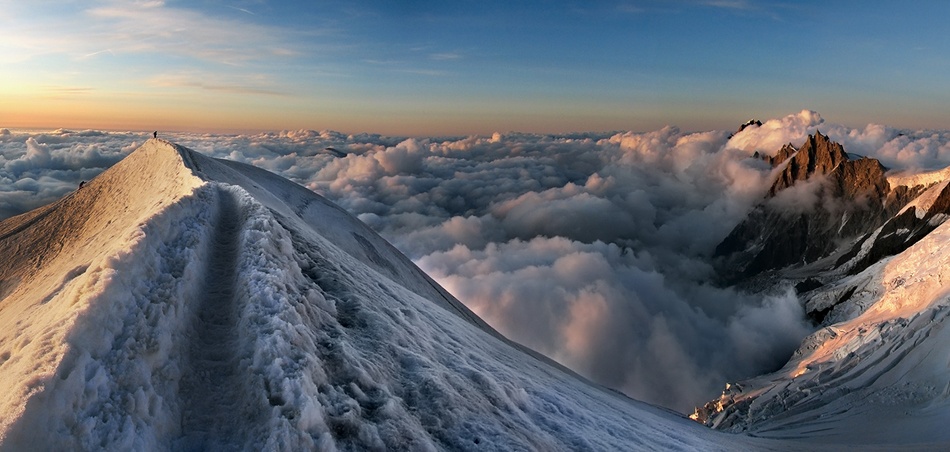
'Highway to Heaven' by Szczepan Podolec
French Alps are known for their great diversity in terms of fauna and flora. They are home to more than 5’000 species of plants and more than 12’000 species of wildlife live there.
In addition, they offer beautiful and unique places that are worth seeing and experiencing.
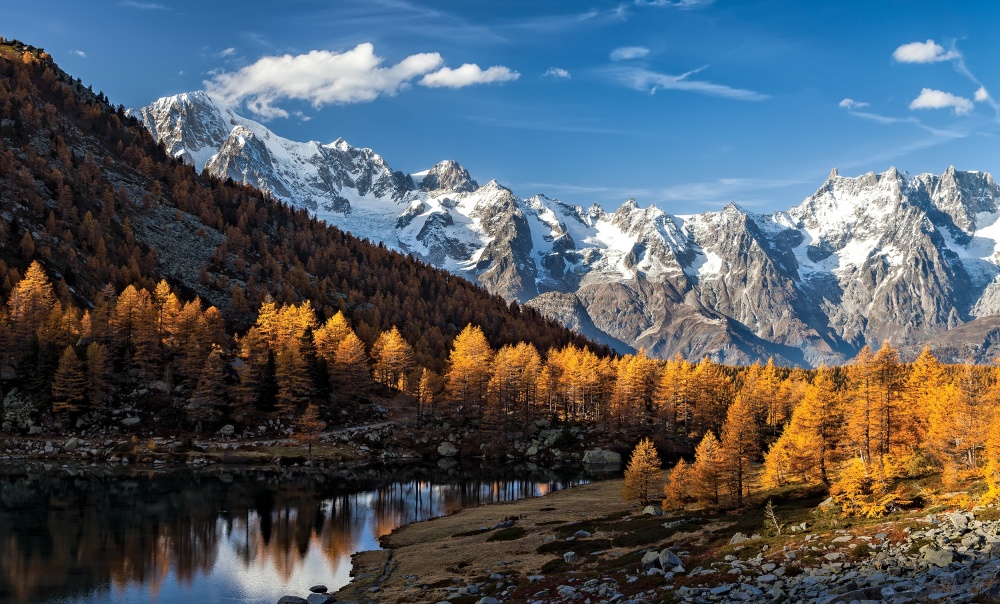
'Autumn in the Alps' by Alfredo Costanzo
ITALIAN ALPS
The Italian Alps are divided into three parts, the southern, eastern and the western part.
Dolomites belong to the finest part of the Italian Alps. They are part of the Southern Alps and spread over the regions of Veneto and Trentino-Alto Adige.
Since 2009 selected part of Dolomites is included in the UNESCO World Natural Heritage Dolomites.
The highest peak in the Dolomites is the Marmolata at 3’343 meters. Other well-known peaks or massifs are the Civetta, the Monte Paterno, the Antelao, the Three Peaks, the Sella, the Catinaccio, the Sciliar, the Geisler and the Sassolungo.
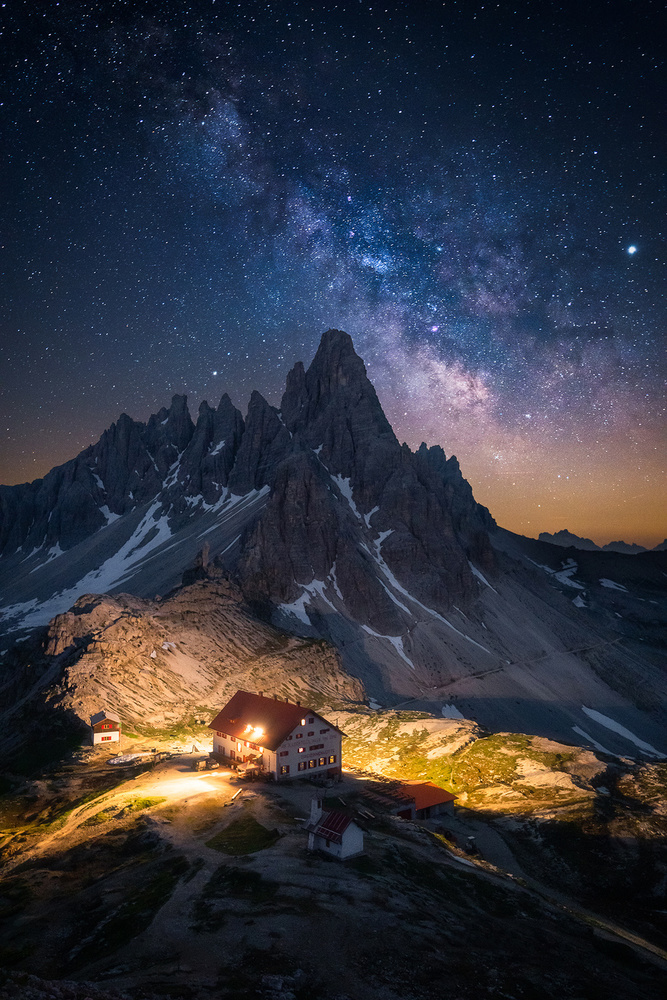
'Monte Paterno' by Marco Calandra
The Italian part of the Julian Alps is known for the Jôf di Montasio (2’753 m), and Brent with the 3’173 m high Cima Tossa summit, belongs to the eastern Italian Alps.
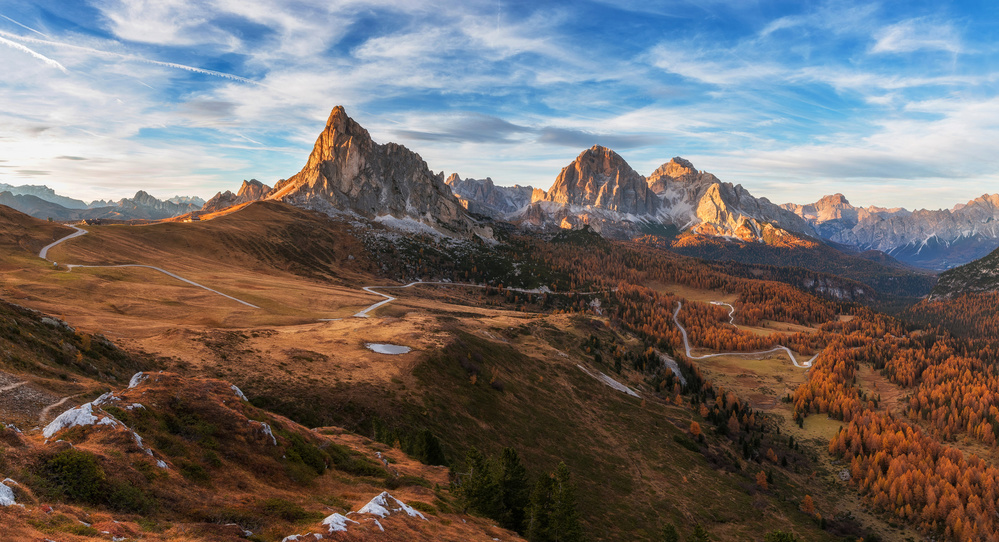
'Autumn in Dolomites' by Ales Krivec
The western section includes one part of the Valais Alps with the giant Dufourspitze, which is 4’634 meters high. Among others, here can be found the Grajer Alps with the summit of Gran Paradiso – 4’061 meters.
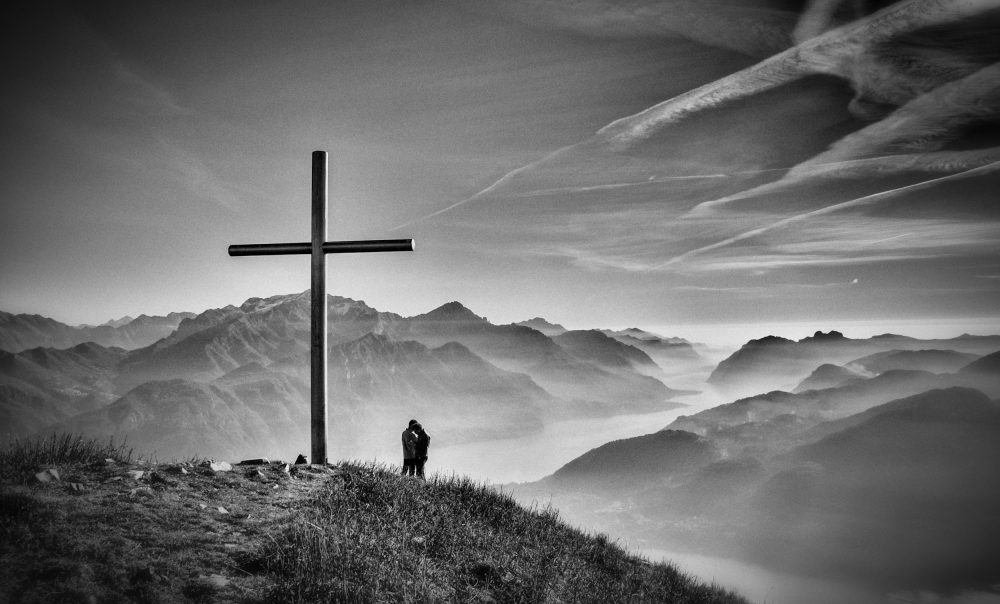
'Where the sky ends' byVito Guarino
SWISS ALPS
Swiss Alps cover more than three-fifths of the national territory of the Helvetic Confederation and, in their entirety, belong mostly to the Western Alps, which spread out mainly from the southwest to the northeast.
The northern part of the Swiss Alps consists of Bernese Alps, and in the west of Glarus Alps.
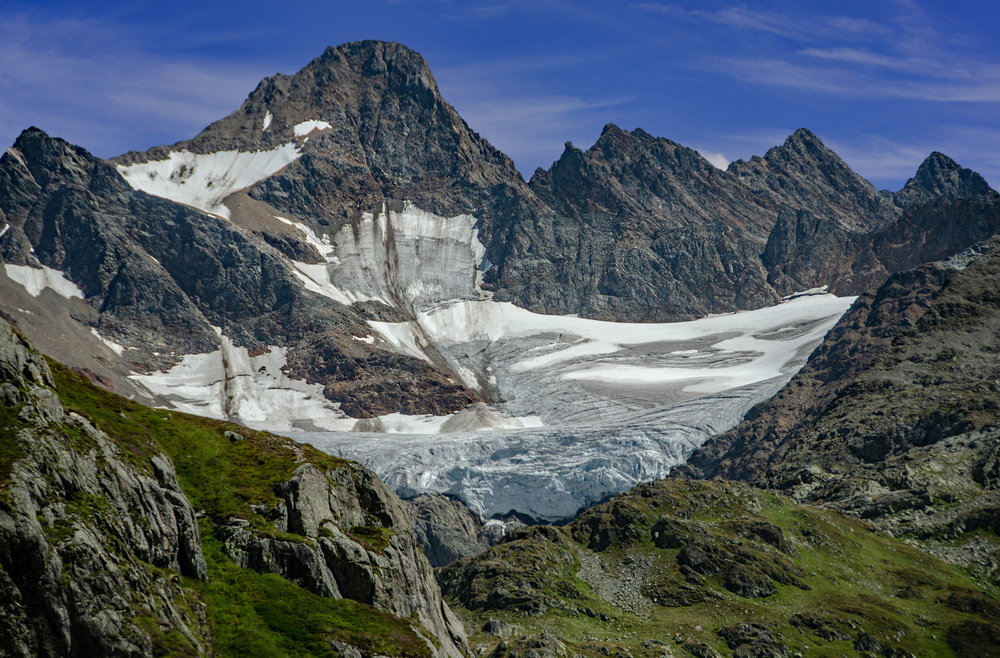
'Alpine Glacier' by Miro Susta
The southern part is taken up by Valais Alps, Ticino Alps and Grisons Alps.
The Gotthard massif, through which the longest railroad tunnel in the world passes, is considered the centre of the Swiss Alps.
The Matterhorn (4’478 m) and the Eiger (3’967m) are probably the best-known mountain peaks in the Swiss Alps, but they are not the highest.
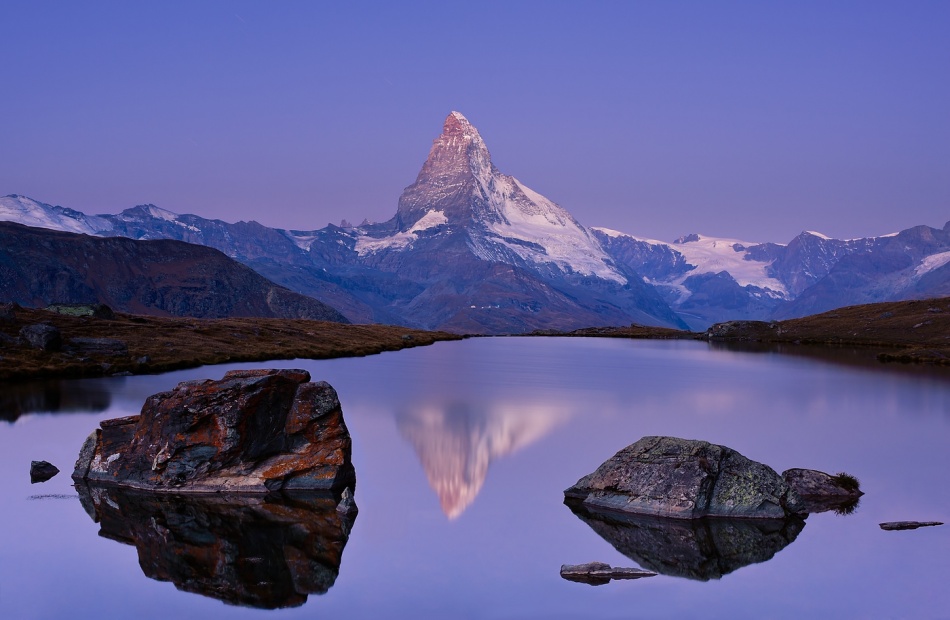
'The first touch' by Krzystof Mierzejewsky
The highest fixed point in Switzerland is 4’634m above sea level on the Dufourspitze (on the border with Italy), which is also the highest peak in the Valais Alps.
Since the Swiss Alps are dominated by many glaciers, which naturally provide a large amount of water, there are also two major European rivers that have their source in Switzerland.
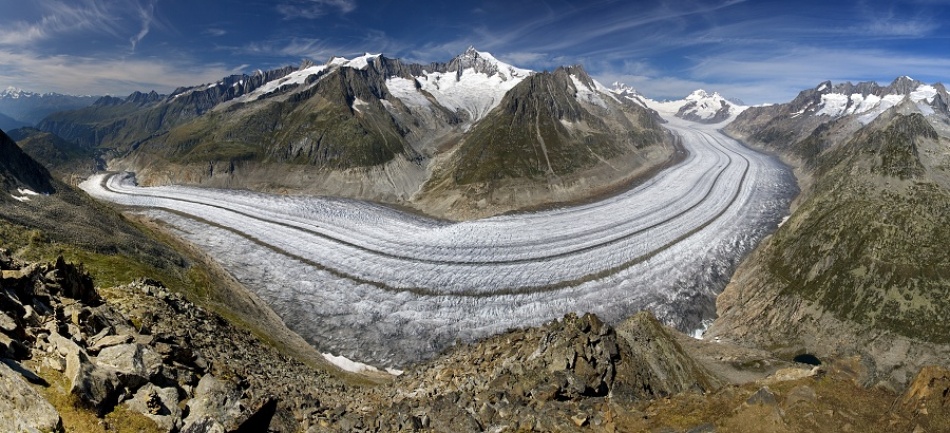
'Aletschgletcher' by Tomas Sereda
The Rhine, one of the longest rivers in Europe, and the Rhone, both, originate in the Grisons Alps, but the Rhine flows into the cold North Sea and the Rhone into the rather warm Mediterranean Sea.
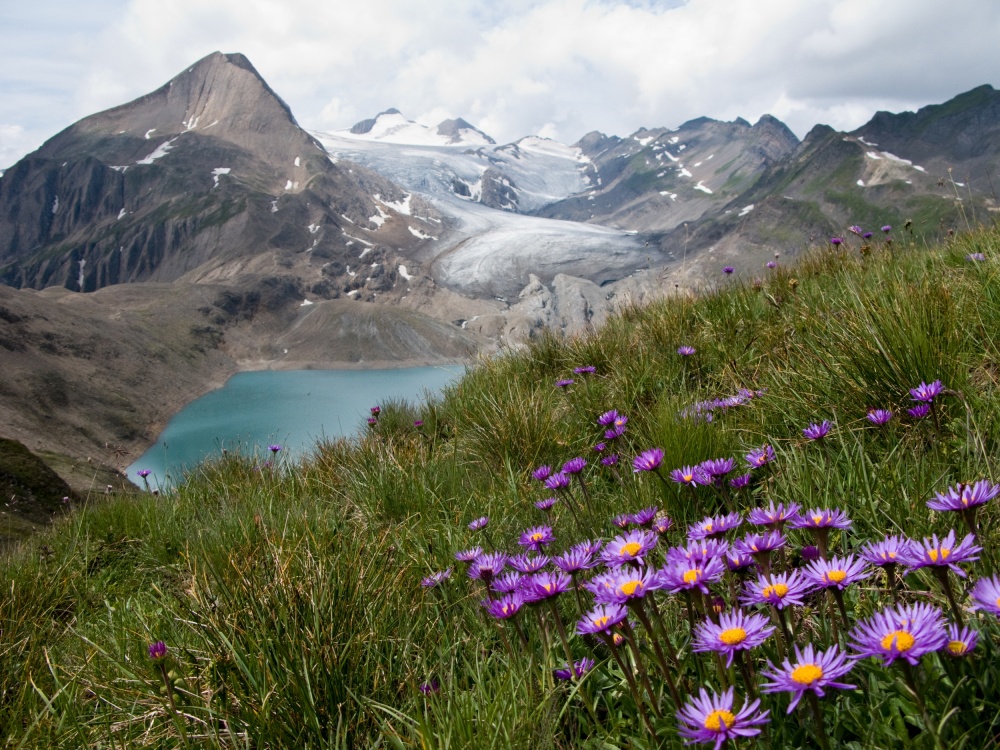
'Corno Gries, Switzerland' by Vito Guarino
Switzerland has many Alpine road and railway bridges and tunnels. The most notable tunnels are the Gotthard Road Tunnel (16.9 km long) and the Gotthard Base Rail Tunnel (57.1 km long). The most famous bridge is the World-Heritage-listed Albula Railway Landwasser Viaduct, which is 65 metres high, 136 metres long.
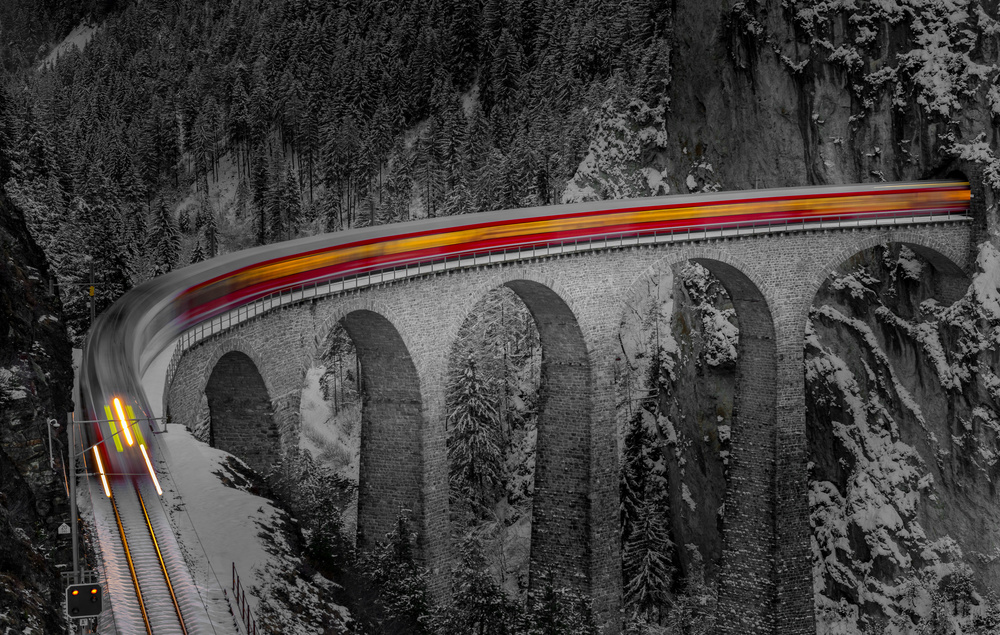
'Ghost Rider' by Andreas Agazzi
GERMAN ALPS
Germany shares a small region of the Alps, entirely located in Southern Bavaria.
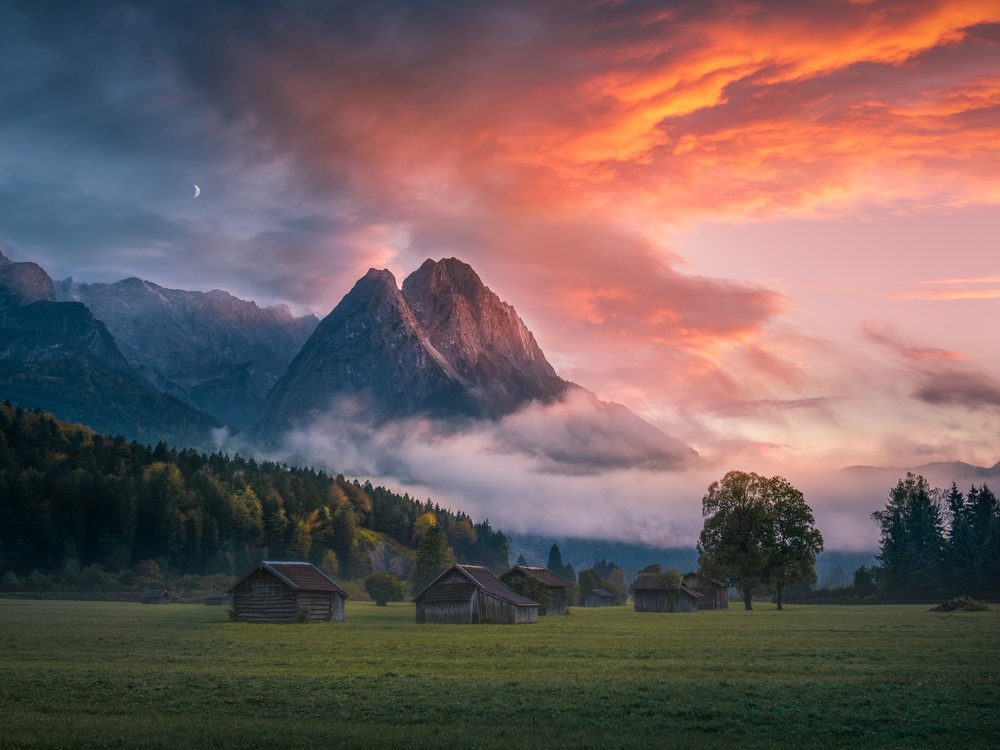
'Bavarian heartland' by Dag Ole Nordhaug
The German-Bavarian Alps belong to a range of the Northern Eastern Alps. The western end is formed by the Allgäu Alps, the eastern end by the Berchtesgaden Alps.

'Rainy morning at Hintersee' by Dirk Wiemer
Zugspitze is the highest peak at 2’962 meters located in the Wetterstein Mountains, it overlooks Garmisch-Partenkirchen and offers a fantastic view of more than 400 Alpine peaks.
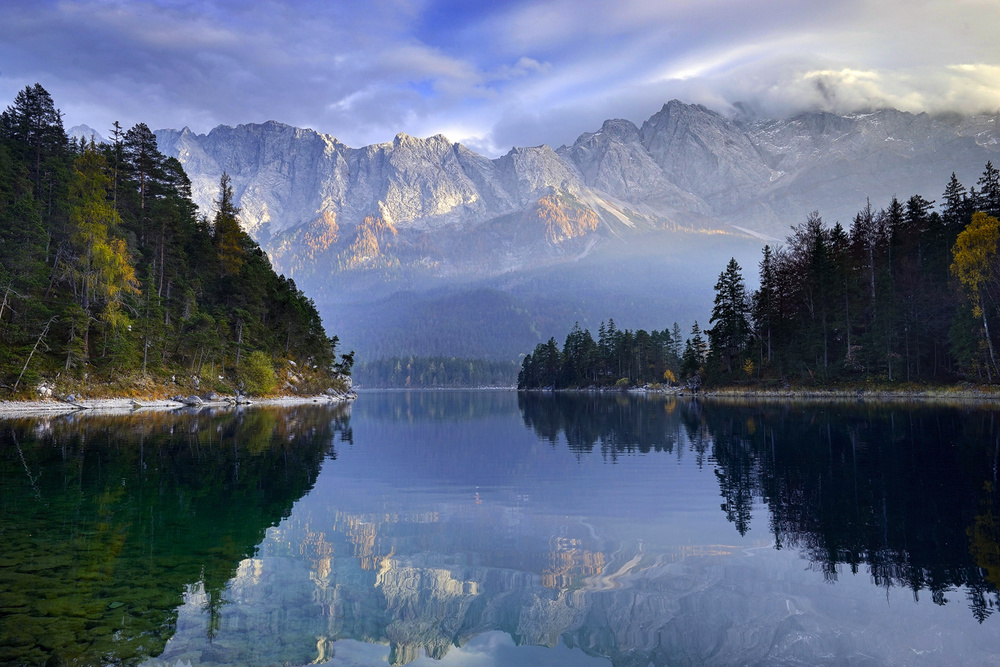
'October Days' by Norbert Maier
About half of the area of the Bavarian Alps is covered by forests.
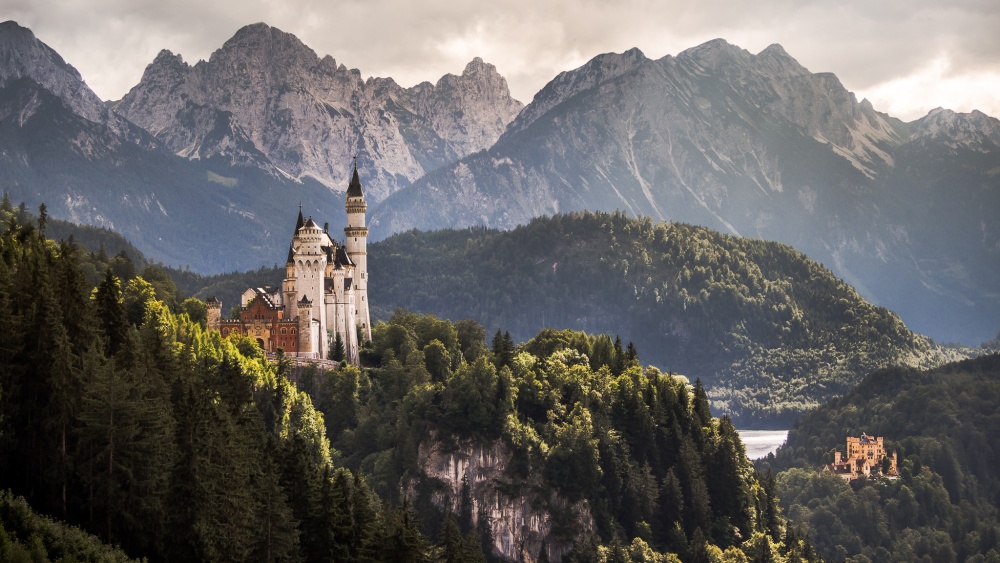
'The Two Castles' by Andreas Wonisch
AUSTRIAN ALPS
The Austrian part of the Alps, which covers about two thirds of the Austrian territory, includes most of the Eastern Alps, the Carnic Alps, the Southern Karavanke and northern parts of the Southern Alps.
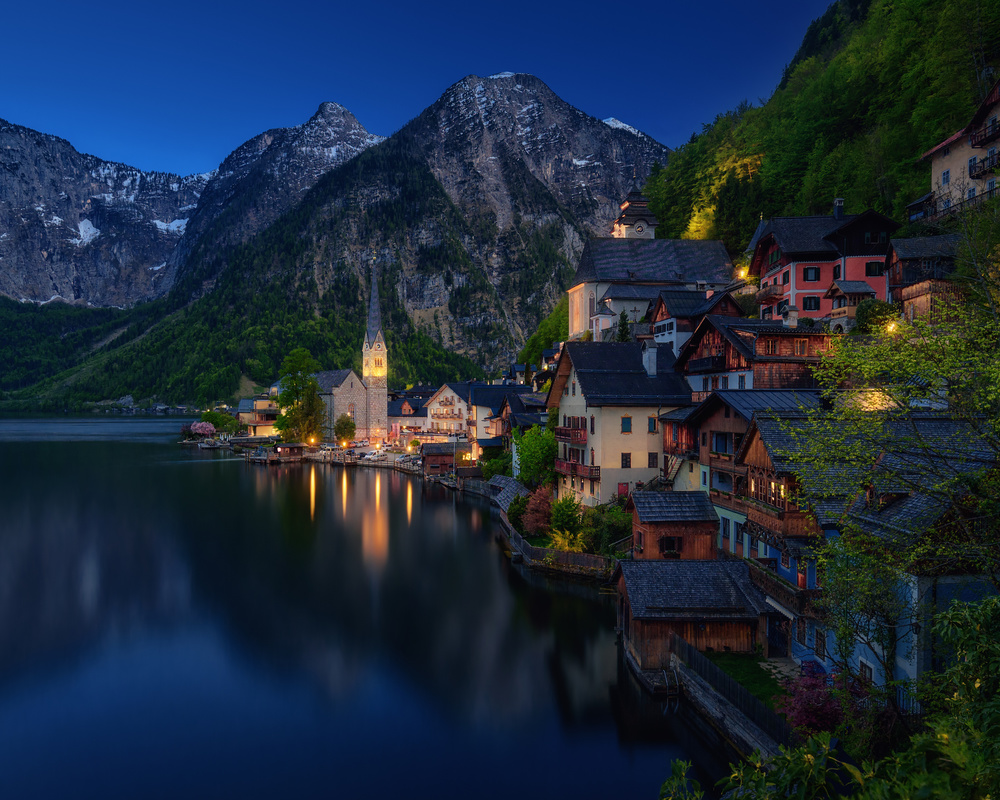
'Tourist view' by Juan Pablo de Miguel
The Austrian Eastern Alps are divided into the Northern Alps and the Central Alps, whose border is given by the line from western Klostertal- Arlberg to the southern Vienna Basin in the east.
The Großglockner (3’797 m), Austria's highest mountain, and the 20 km2 Pasterzen glacier are in the Hohe Tauern.
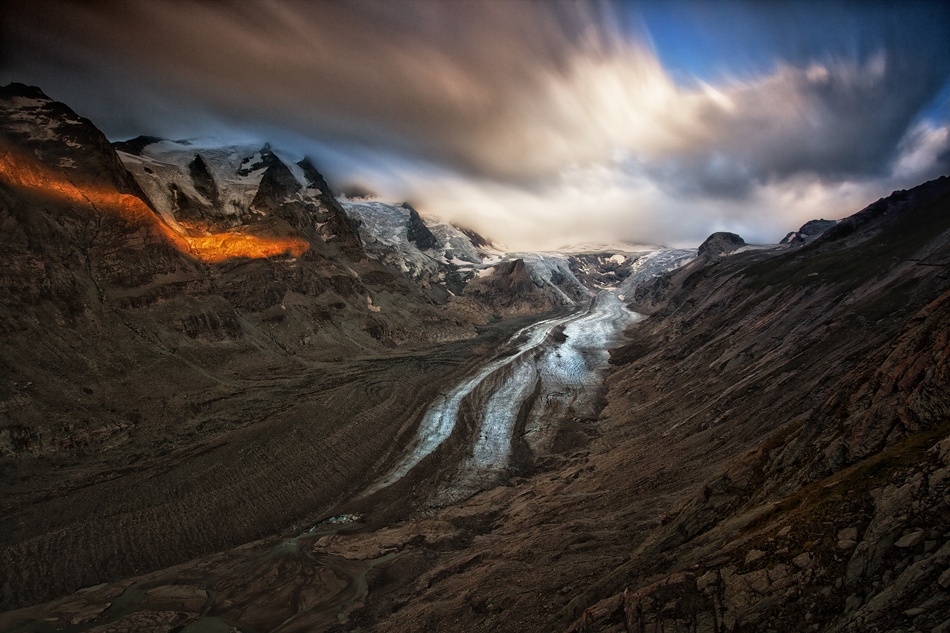
'New day is born' by Zdechlypes
In addition, there are nearly 1000 glaciers and about 860 "three-thousanders" in the Austrian Alps.
The Austrian Alps form an important climate and water divide for the country. The western and northern rim is characterized more by the Atlantic climate with rich precipitation from westerly winds, the eastern part by the dry Pannonian inland climate from Hungary and the southern slope by the mild Mediterranean climate.
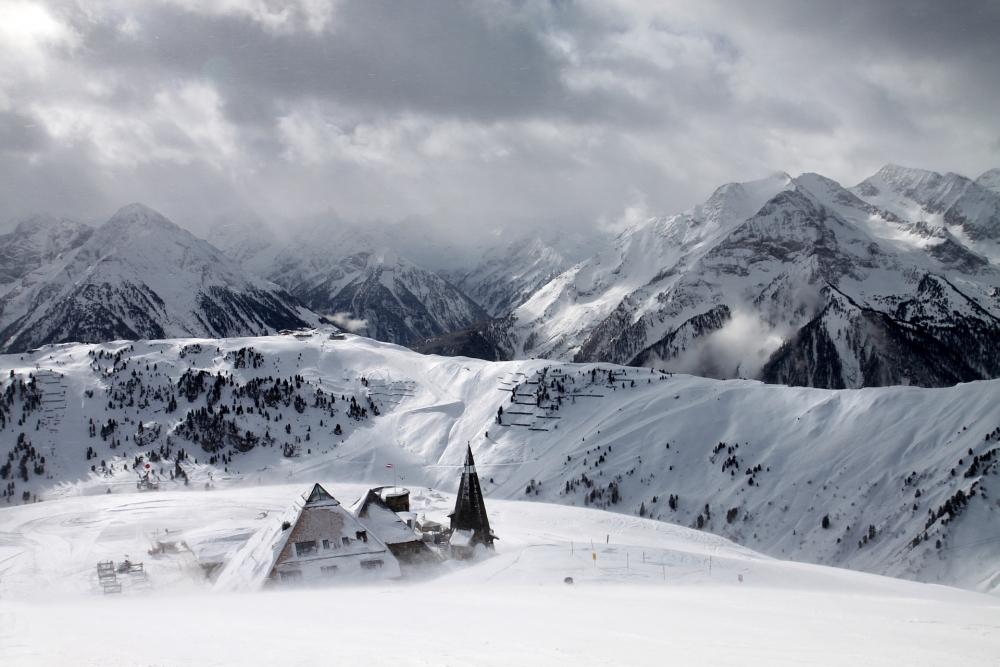
'Snowstorm in the Alps' by KrystynaAnnaMaria
SLOVENIAN ALPS
The Slovenian Alps are the most remarkable mountain group in Slovenia, stretching in the north of the country.
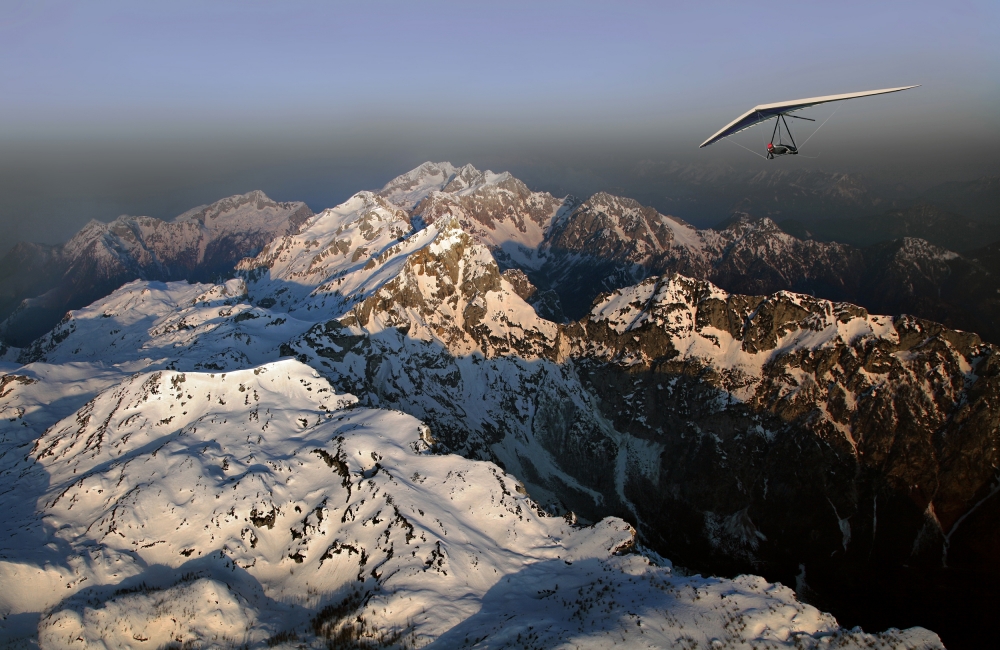
'Out of the blue' by Matjaz Cater
On a relatively small area there are 210 peaks exceeding the height of 2’000 m, 24 of them are higher than 2’500 m. The highest peak in the Slovenian Alps is Triglav - 2‘864 m, which is also the highest point in Slovenia.
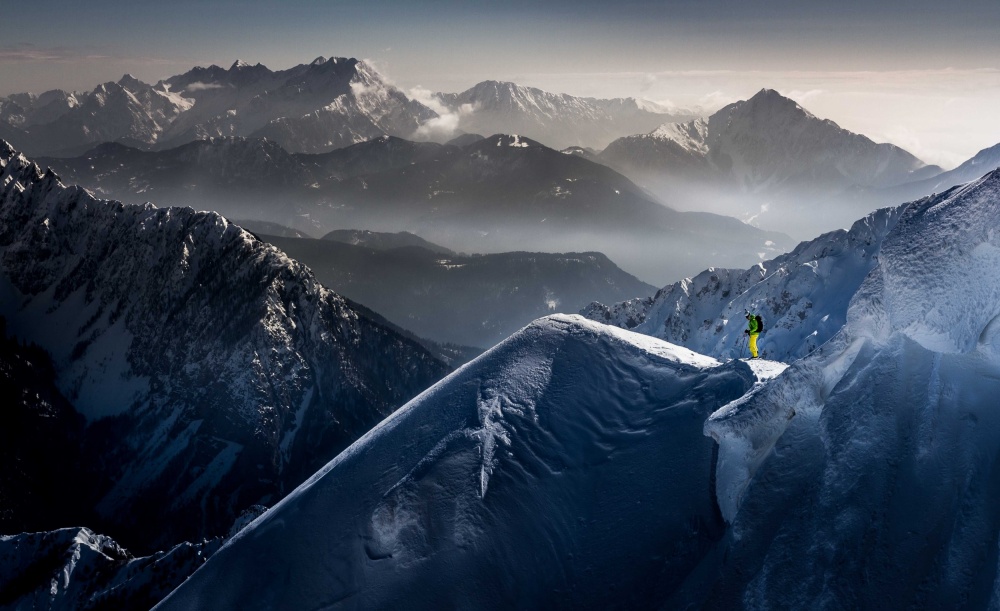
'Silent Moment before descent' by Sandi Bertonelj
GLORY TO THE BEAUTY
From the 18th century onwards, the Alpine region attracted attention in the context of a growing admiration for nature.
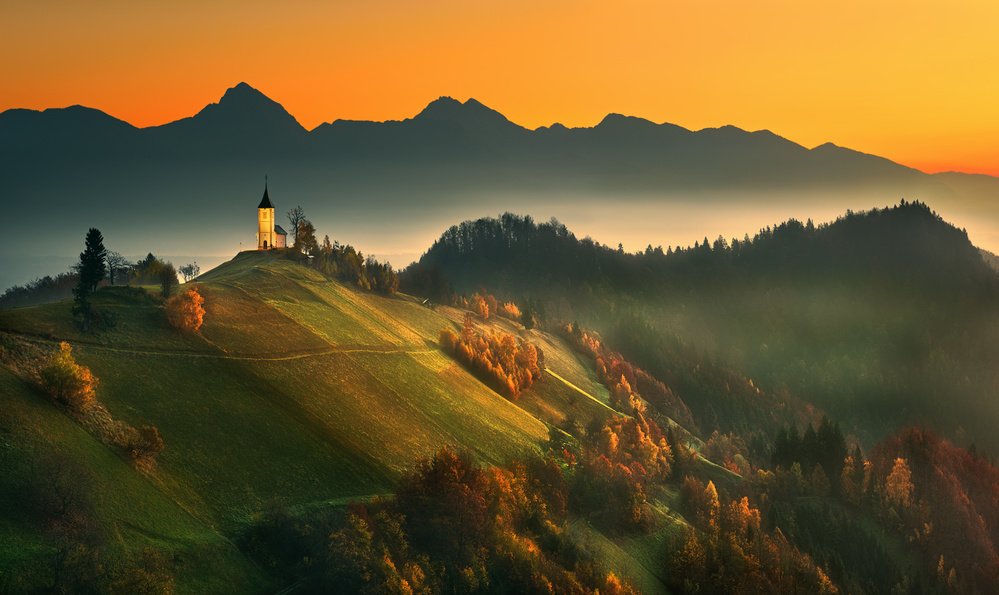
'Slovenian autumn...' by Krzysztof Browko
The Alps were described as "an extraordinary mountain country."
Considering the Alpine landscape and the photographs that are featured in this article, one can certainly agree with that.
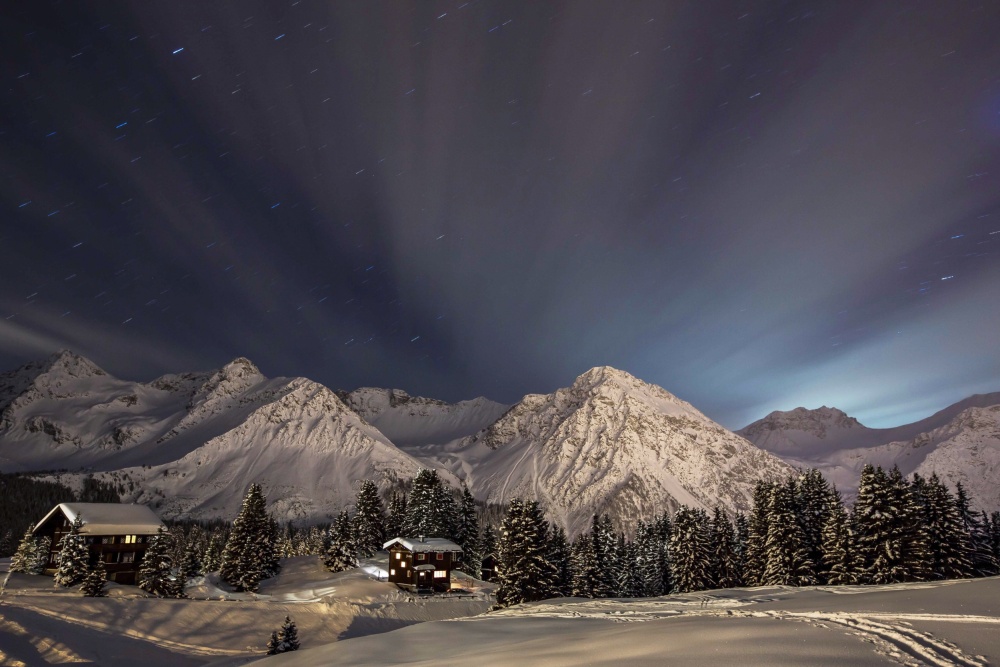
'Winter evening in the mountains' by Ralf Eisenhut
However, the reason for that are not only the striking landscapes of this mountainous region, but also its exceptional location in the middle of densely populated European countries.
We are living in an amazing world that is full of beauty, charm and adventure. The Alpine region is a part of it and I am sure that we will continue enjoying and discovering it after defeating our current strong enemy, the COVID-19.
Just stay healthy and strong, be patient and keep your camera ready.
 | Write |
 | Thierry Dufour PRO Wonderful images, thank you very much !!! |
 | Miro Susta CREW Glad to see that you like it Thierry. Many thanks for your appreciation. |
 | Francisco Villalpando PRO Wonderful article, Miro and Yvette!, I enjoyed it reading and admiring the beautiful photographs. Thank you. |
 | Miro Susta CREW Many thanks for your nice comments Francisco, we appreciate it very much. |
 | Vito Guarino PRO Beautiful presentation Miro and Yvette. Thank you so much for sharing two of my image in this splendid collection. |
 | Miro Susta CREW Many thanks for nice words of appreciation, and thank you for your beautiful photos. |
 | Andreas Agazzi PRO A beautiful series brought together, thank you very much Yvette and Miro for this lovely work! |
 | Miro Susta CREW Many thanks for your nice appreciation Andreas. |
 | Vladimir Funtak PRO Wonderful presentation, Thank You... |
 | Miro Susta CREW Most welcome Vladimir. |
 | David Martin Castan PRO Thank you guys . I´m very happy to be in this big selecction ;) |
 | Miro Susta CREW Welcome David. Thank you for your excellent photo contribution. |
 | David Martin Castan PRO Thank you Yette. I´m very happy to be in this selecction ;) |